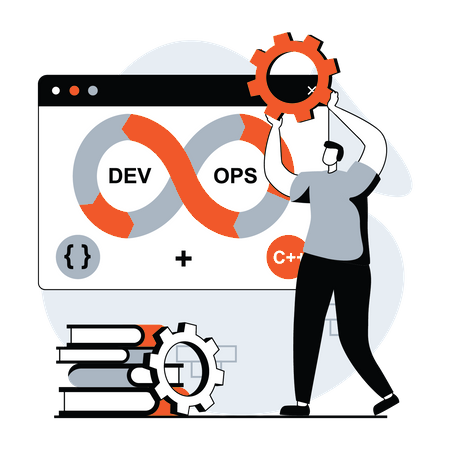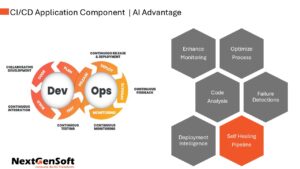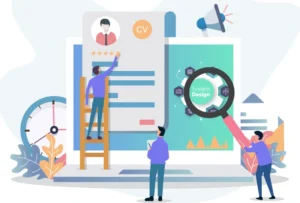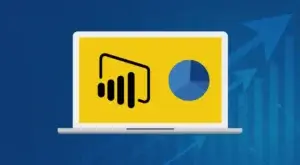What is Application Modernization?
Legacy frameworks are out of date, moderate advancement, drive up expenses, and open organizations to security dangers. An organized application modernization strategy increases agility, lowers IT costs, and reduces time-to-market. Researchers show here that organizations contributing to modernization are slashing operational costs to 30%, improving the execution speed of applications by 40%, and giving a competitive advantage.
At NextGenSoft, we transform legacy frameworks with legacy app modernization services with the assistance of the cloud, microservices engineering, and a security-first approach. With AWS, Azure, and Google Cloud, our tailor-made innovation modernization strategy makes adaptable, economical configurations. Organizations that have moved to modernized applications were found to be able to diminish IT system costs by 40%, improve application arrangement speed by up to 50%, and diminish security vulnerabilities by up to 70%.
Outdated innovation can prevent progress—helping individuals and institutions update and improve scope. With a tried-and-tested application modernization strategy led by industry experts, we ensure the relocation is consistent, execution is optimized, and innovation is future-proof ensuring businesses thrive in a digital-first world.

State of art Modernization Services
- Application Modernization
- Data Modernization
- Infrastructure Modernization
- Platforms Modernization
- Security & Compliance
Application Modernization
Data Modernization
Legacy Database Migration
Disaster Recover Implementation
Backup Strategy Implementation
Big Data & Analytics Platforms
Data Warehousing & Data Leaks
Real-time Data Processing
Infrastructure Modernization
On-Premises to Cloud Migration
Virtual Machines to Containers
Serverless Adoption
Event-Driven Platform Implementation
Monolithic to Microservices Architecture
Infrastructure As Code
CI/CD Pipeline as Code
Platforms Modernization
Technology Platforms
Cloud Platforms
Security & Compliance
Zero Trust Architecture (ZTA)
Identify & Access Management
Cloud Security Posture Management (CSPM)
Compliance Alignment (GDPR, HIPAA, SOC2, ISO 27001)
Application Modernization Benefits

Enhanced Scalability
Cloud architectures and microservices make modern applications scale seamlessly to varying demands. Businesses can scale up globally without any performance hits.
Improved Performance
Updating legacy systems eliminates inefficiencies and speeds up these processes — which means faster response times. Improved user experiences and higher satisfaction levels are the result of this.
Cost Efficiency
Outdated systems incur high maintenance costs, and modernizing apps solves that. Cloud-based solutions offered by top application modernization companies not only optimize expenses using pay-as-you-go pricing models but minimize maintenance costs.
Increased Security and Compliance
Legacy systems also typically have minimal security features. Encryption, authentication, and other compliance assets come into play as well with modernization which reduces risk and complies with the various regulations.
Faster Time-to-Market
Modern frameworks with Agile development practices reduce development cycles and make it easier for businesses to quickly deploy new features or services.
Seamless Integration with New Technologies
Businesses are flexible with the sudden changes in the market. Easier integration with AI, IoT, and big data analytics.
Challenges If Customers Do Not Modernize Applications
High Maintenance Costs
Maintenance and support of legacy frameworks demand considerable assets. As time passes, hardware and software become outdated, and costs increment, pressing IT budgets more tightly.
Limited Scalability
Obsolete systems cannot manage growing client requests or data loads, resulting in drowsy execution, benefit interruptions, and unsuitable client experiences.
Security Vulnerabilities
Many older applications were not designed with sufficient security measures to help combat today’s cyber threats, leaving businesses vulnerable to potential data breaches and compliance issues.
Missed Opportunities for Innovation
Legacy systems are frequently not compatible with modern tools and technologies, hindering businesses from implementing AI, machine learning, or cloud-based solutions.
Inability to Meet Market Demands
Now, businesses depending on obsolete systems risk becoming irrelevant, losing customers, and ultimately giving up their market share as competitors launch innovative, feature-ready solutions.
Best Practices to Be Followed in Application
Assess and Prioritize Applications
All the application portfolio analysis of your organization. Modernize the tech stack, starting with the critical systems — prioritize by business value and return on investment.
Adopt Microservices Architecture
Replace monolithic applications with microservices. This makes applications future-ready with improved agility, scalability, and resilience.
Leverage Cloud Infrastructure
Migrate Apps to the Cloud: Move applications to the cloud to save on infrastructure costs but also gain scalability, high availability, and performance optimization.
Implement Continuous Integration and Deployment (CI/CD)
Implement continuous integration and continuous delivery (CI/CD) so that development, testing, and deployment processes can be automatically conducted, allowing for rapid delivery and consistent updates without human interference.
Ensure Robust Security Measures
As you modernize your application stack, implement security controls such as identity management, encryption, and periodic vulnerability tests.
Focus on User-Centric Design
Recreate interfaces and workflows for improved user experiences. As a result, it complicates the app for both employees and customers to benefit from intuitive applications.
Monitor and Optimize Performance
After modernization, contemporary monitoring technologies will help track the execution of applications. As technological requirements and business objectives change, frameworks should be continuously reorganized.
Train Teams and Manage Change
Empower IT groups with skill sets & tools, to interact with modernized applications. Cultivate a culture of agility and continuous learning, to smoothen the integration process.
Latest Trends

Cloud-Native Development
Leverage microservices (Kubernetes, Docker) and serverless computing (AWS Lambda, Google Cloud Functions, Azure Functions) to build cloud-native applications for better scalability, resilience, and agility.

Multi-Cloud Adoption
Realize a multi-cloud strategy to prevent vendor lock-in, promote flexibility, help optimize costs, and improve disaster recovery through your distribution of applications and data on different cloud providers such as AWS, Azure, and GCP.

AI-Driven Application Modernization
When is the next AI unicorn born in new applications modernization? Utilize AI-driven tools to perform code refactoring and migration, speed up development cycles with generative AI (Copilot and ChatGPT), and access intelligent observability through AIOps, plus embed AI/ML in your applications to enable capabilities such as chatbots and predictive analytics.

Low-Code & No-Code Development
Facilitate application development and enable business users to leverage low-code/no-code platforms for rapid prototyping of composable applications while decreasing development effort time and increasing agility.

API-First & Headless Architectures
An API-first and headless architecture using REST, GraphQL, gRPC, headless CMSs like Strapi and Contentful, and event-driven systems (Kafka, RabbitMQ) that allow applications to be easily integrated and provide great omnichannel experiences.

DevSecOps & Security-First Modernization
Integrating DevSecOps in your Application Modernization: The shift-left security, zero trust architecture, CSPM, and AI-powered threat detection for better security against regulatory compliance for GDPR, HIPAA, and SOC2.

Legacy System Modernization & Mainframe Offloading
Replatform, rehost, containerize, and refactor code to modernize legacy systems and offload mainframe applications to lower operational costs and improve scale.

Observability & FinOps for Cloud Cost Optimization
Leverage FinOps practices, AI-driven observability platforms like Datadog and New Relic, and cloud-native monitoring tools to optimize cloud costs and understand applications and performance at a deep level.
Why NextGenSoft?
End-to-End Expertise
Partner with NextGenSoft, a global digital transformation company, and leverage our multi-cloud engineers’ abilities. As a trusted IT solutions provider, we build up secure inter-cloud networks, map native cloud services, and make vendor-agnostic methodologies to maximize esteem and minimize dangers.
Delivery Excellence
We rethink conveyance fabulousness with optimized program lifecycles. From advancement to arrangement, our digital transformation services and solutions focus on dependable, high-quality discharges that enhance client satisfaction.
Flexible Hiring Model
NextGenSoft’s adaptable contracting models give access to talented IT service providers custom-fitted to your needs. Scale easily with agile assets for DevOps, guaranteeing consistent collaboration and venture victory.
Transparent Actions
Our commitment to straightforwardness builds belief and cultivates cooperation. As a leading digital transformation company in India, we guarantee adjusted objectives, open communication, and compelling collaboration for shared success. reach out and Contact Us to learn more.
Technology Modernization

Assess Current Systems
In-depth system assessments to identify inefficiencies, bottlenecks, and security risks. Build a hardware, software, and infrastructure inventory to ensure modernization priorities are business-focused.
Define Goals
Define explicit modernization objectives, improved performance, lower costs, and/or better scalability. Review and maintain all architecture compliance to industry standards and coordinate with stakeholders to address any technical and operational requirements.
Plan Strategy
The database modernization strategy should be developed with a focus on high-impact areas. Picking between options of rehosting/refactoring/re-platforming/replacing based on business objectives and quick-win opportunities.
Select Cutting Edge Technologies
All of these can use technologies such as cloud platforms and AI and DevOps tools to scale and be more efficient. Update cyber-security procedures to protect systems from evolving threats.
Migrate Systems and Data
Hot-backup critical data and test migration processes to validate and reduce disruptions. Incremental rollouts and data integrity checks are critical for application modernization companies to ensure smooth migration and establish modern environments.
Monitor and Measure
Monitor metrics such as cost savings and client fulfillment to gauge the victory of modernization. Collecting criticism and emphasizing on systems to stay ahead of the game.
FAQs
-
Why is application modernization important?
Application modernization upgrades execution, security, and versatility whereas lessening costs. It transforms legacy systems, improves agility, and adjusts IT with trade objectives, guaranteeing consistent operations and a future-ready digital infrastructure. -
What services are included in application modernization?
Application modernization services incorporate legacy app modernization, cloud movement, application code audit, microservices integration, UI/UX improvement, API modernization, and re-platforming to optimize proficiency, security, and adaptability. -
How do legacy app modernization services work?
Legacy application modernization services analyze outdated systems, identify inefficiencies, and implement application modernization strategies like refactoring, rehosting, or rebuilding to enhance performance, security, and scalability while reducing operational costs. -
What do application modernization services companies typically offer?
Application modernization companies provide legacy application modernization, cloud migration, re-architecture, API integration, and application code review to enhance security, scalability, and performance for modern digital ecosystems. -
What is an application code review?
An application code review assesses code quality, security vulnerabilities, and execution bottlenecks, guaranteeing consistent application modernization and optimization for superior viability, productivity, and compliance. -
What are the benefits of application modernization?
Application modernization improves dexterity, security, and versatility while diminishing costs. It improves client experience, coordinates progressed technologies, and future-proofs business operations with legacy application modernization services and cloud-based solutions. -
What is application modernization?
Application modernization is the process of upgrading legacy systems using application modernization strategies, including cloud adoption, microservices, and automation, to improve performance, security, and scalability.
Contact us

Submit Your Inquiry

Detailed Proposal

Collaborate and Plan






















